Best Pool Pump of the Year | Best4YourHome’s Top Rated Pool Pumps of 2019
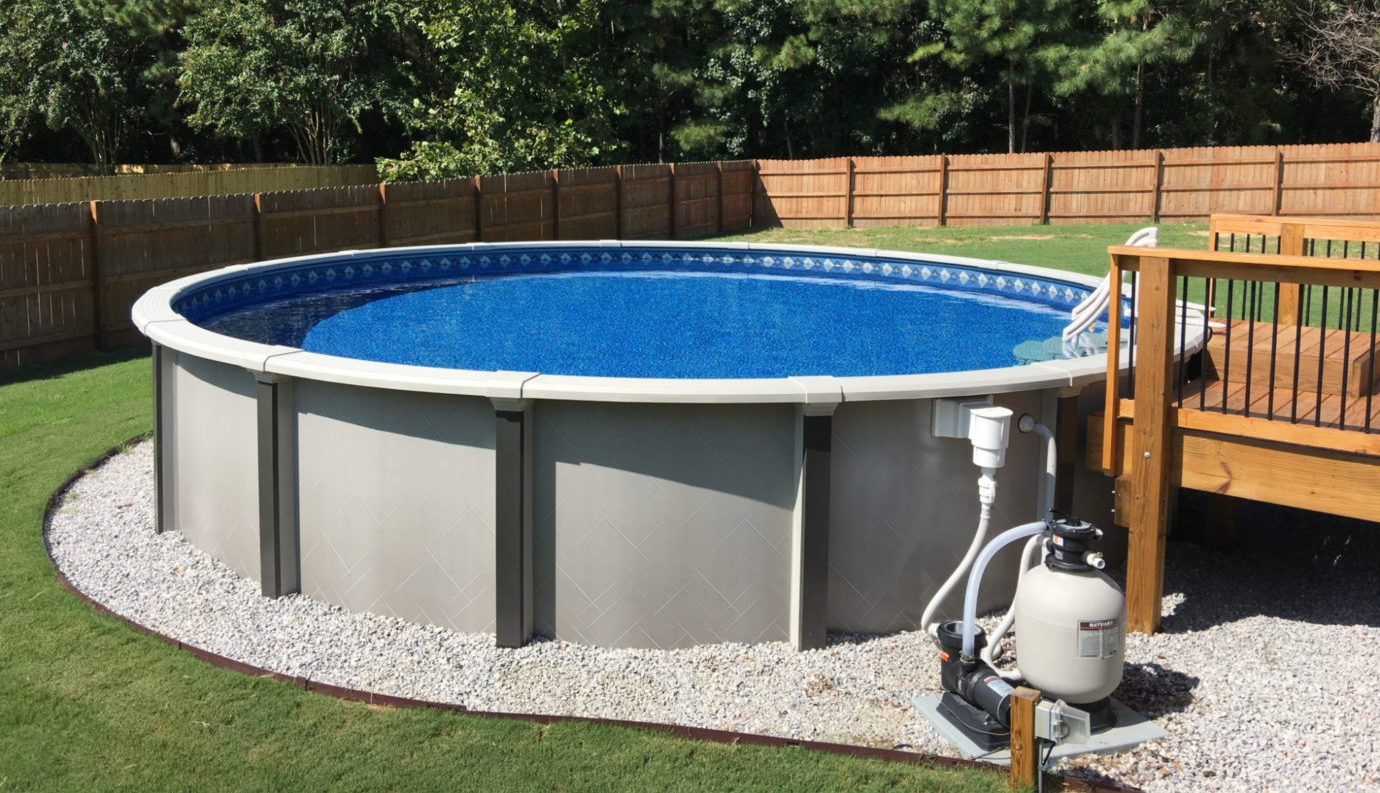
Looking for the best pool pump of the year? We’ve got you covered! When you got into your car this morning, you steered yourself to get through the last day of the week to sail into the weekend. You knew that if you could just endure the next 8 hours, you would be able to come home to a cool dip in the peaceful pool in your backyard.
No screaming teenagers, no blown-up pool toys and teary-eyed toddlers. Just you, a pair of shades, and a glass of your favorite summer drink.
Sounds pretty amazing, doesn’t it?
If you’re a pool owner, you know what it’s like, that freedom of cooling your body down from the near-boiling temperatures of the scorching sun. Sure, it does cost a bit more every year to run and there’s maintenance involved. But having a pool is an amenity you probably won’t go without in the future, if you have anything to say about it.
For those who are thinking of owning a pool, you might be wondering, is it worth all the worry and cost, just for that reprieve from the heat? Ask a pool owner and you’re sure to get a resounding, “yes!” If you’re not convinced, keep reading. We’ve got the skinny on the cool dip of the season.
In this article, we’ll show you 7 of best top pool pumps on the market today. Before that, however, we’ll talk about what you should know as a (potential) pool owner, and what sort of things you should keep in mind as you consider owning a pool. If you’ve ever wanted to know about the different types of pumps out there, we’ve got you covered, too. Here’s a quick guide to our top 7 picks
[table id=230 /]
Consider this an unofficial, crash-course pool guide, if you will. Because once you’ve finished reading what we’ve got for you here, you’ll feel like an expert in pool cleaning, best pool pumps, and above ground pool pumps.
To start off, let’s talk about some myths you might have heard about pools. Which ones have you always believed?
Swimming Pool Misconceptions
Unless you know someone that owns a pool, you’ve probably never really thought about what owning a pool means. There are a lot of misconceptions about owning a pool, and you might be surprised to find out that what you thought about pool ownership may not necessarily be true.
Related: Best Inflatable Pool
Here are some common misconceptions about pools. If you’ve been guilty of believing some of the following pool myths, it’s okay. Consider this your learning moment of the day!
- You have to be rich to own a pool. Some people confuse the luxury of a pool with a money-laden, worry-free life. While that is very true in some instances, it doesn’t take a credit check to have a pool. Most pool owners make an average wage that allows them to pay a standard mortgage for a house with a pool.
- Pools are a waste of water and energy. Technology has come a long way in just even the last 20 years. Pools do require water, so yes, it can seem like a waste to some, but many pools are incredibly energy-efficient.
- Pools are a huge drowning hazard. Drowning can occur in a bathroom tub. Owning a pool, like most responsibilities in this world, requires diligence, especially if you have younger children. There are ways to keep toddlers away from pools, and there are several safety measures that should be enforced whenever young children are present around large amounts of water. Practice common sense whenever possible.
- Owning a pool means hours of maintenance. Some people invest in a lawn or landscaping. Others choose to invest in a pool. Having such a water feature is going to take attention from your daily responsibilities, but if you can stay on top of maintenance, it will not keep you more than 1 hour per week. Striking the proper balance in terms of chemicals and cleaning can take a bit to get the hang of, but once you’ve got a schedule going, it’s simply putting in the few minutes of upkeep each day or week.
- Operating a pool costs a pretty penny. Depending on what your budget looks like, yes, pools can be an expensive monthly fee. But when compared to other costs that surround you, it could be worse. RVs and boats are notorious for running costs through the roof, so having something you can enjoy, even as you have to pay for the luxury, is not so bad. You get use out of it whenever you want and it’s private. For some people that’s reason enough.
If you’re still curious about how pools work, keep reading! Better yet, strike up a conversation with your friendly pool owner and see what they have to say. They’ve probably been in the same place you are if you’re considering a pool, and they most likely will have some guidance that is 20/20 to them but may not be so in focus to you.
Next up, we’re going to talk about how a pool pump works. Understanding how the pump works is key to being able to maintain your pool properly. After all, if you know what the pump is supposed to be doing, you can very obviously identify when it is not performing as it should.
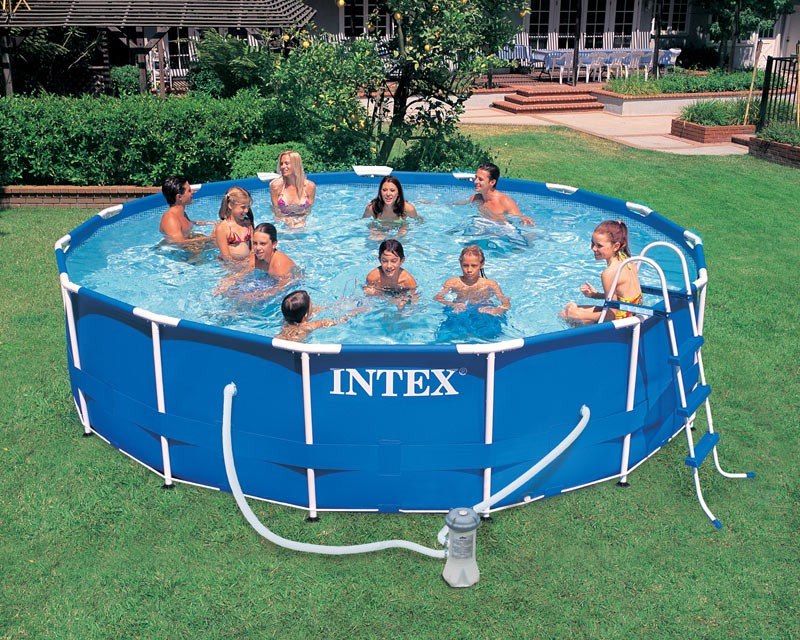
How a Pool Pump Operates
When you hear the term “pool pump,” you probably aren’t sure what to picture. It’s a bit hard to wrap your head around, but once you understand what a pool pump does, you might begin to see a clearer picture.
The first step in understanding how a pool pump works is knowing the basic process the pool pump accomplishes. Mainly, that is, the pool pump directs water from the bulk of the pool’s supply through a filter, and then back into the pool itself. The pump supplies the filter with water—and inevitably, debris—so that it can perform its function. The pump must then supply that clean water back to the pool itself.
Related: Best Pool Floats
Circulation is key to keeping a pool safe and sanitary. Standing water can breed all sorts of unwanted bacteria, so constantly-moving water prevents any of those icky creatures from forming or taking hold. If your pool pump isn’t working right, your 5,000+ gallon pool could become an enormous petri dish.
Now that you understand the pump’s basic function, let’s delve deeper into the anatomy of a pool pump specifically. There are a lot of variations as to what manufacturers do to make their product unique, but as long as the structure completes the above-mentioned task, any pool pump is pretty similar to the next.
Anatomy of the Best Pool Pump
The basic structure of a pool pump consists first of an inlet and an outlet. Water must get to the pump, through it, and then back out again. Once water has entered the pump, it filters through what is called a “strainer basket” that acts much like a colander. Small perforations allow water to flow through, but catch debris like leaves, pebbles, and sand.
The strainer basket is often covered by a see-through lid that allows pool owners to see how full the basket is getting. If you have trees planted near your swimming pool, you’re inevitably going to be cleaning out more leaves, but it’s best that you either scoop the leaves up out of the water yourself or have the filter catch them. Proper filtration is key to keeping your pool clean and healthy.
After water has made its way through the strainer, it is directed via the diffuser outwards by the centrifugal force of the impeller. The diffuser channels the water toward the impeller shaft, which is driven by the pump’s motor. Water will not naturally flow through the pool pump itself, so suction is necessary to establish circulation.
Once the impeller has forced the water out, it is returned to the tank of the pool. The process begins again as the pump works through the pool’s entire volume of water, to theoretically have the entire pool clean within a few hours’ time. Debris usually enters the pool throughout the day, so a pool pump’s job is almost never completed.
When to Replace your Pool’s Pump
Like all moving parts, a pool pump’s motor is going to wear out sooner or later. It’s key to know when to repair certain parts and when to replace them completely, especially if you’re operating on a budget.
The first step in figuring out whether you should repair or replace is pricing out the repair itself. How much would it cost to simply fix the pump you have, rather than replace the entire unit? At the same time, you should also research your pool pump online to see what a new unit costs. Think of this as your cap for repair costs.
Motors, as they are the only moving part in the system, tend to require purchasing an entire new pump due to their high replacement costs. Because if you can get a whole new pool pump for the price of fixing one already installed, sometimes it’s smart to shell out those few extra dollars.
Related: Best Pool Toys
If you do find yourself having to replace a pump, we’ve got 7 you should consider. Pool pumps can be expensive to replace, but the right purchase could mean you won’t have to spend the same amount of money for a few years. Because as a pool owner you know, pumps and filtration systems are only one of many agents in the pool-cleansing process.
Other Ways to Keep your Pool Clean
Though a pool pump and filtration system are the hardest working in terms of keeping a pool clean, there are other ways to combat dirtiness as well. One of the most widely-known ways is using chlorine. Though it might turn blonde hair green, it does a lot to kill the harmful bacteria that loves huge pools of water, not to mention the various organic matter that we as humans constantly shed.
To learn more about the chemistry that goes into maintaining a pool, check out this HowStuffWorks webpage. You can find out more about pH levels as well, which go hand-in-hand with pool chemicals and shock schedules. Hardly an all-encompassing guide to pools, it’s a great resource for beginners looking to learn a bit more about pools and how they operate.
With phase 1 of understanding a pool pump complete, let’s move on to what makes for a good pool pump and how you can be on the lookout as you peruse our list of the top 7 pool pumps on the market today. Before we discuss that, however, do you know the difference between an in-ground pool pump and one that is above ground?
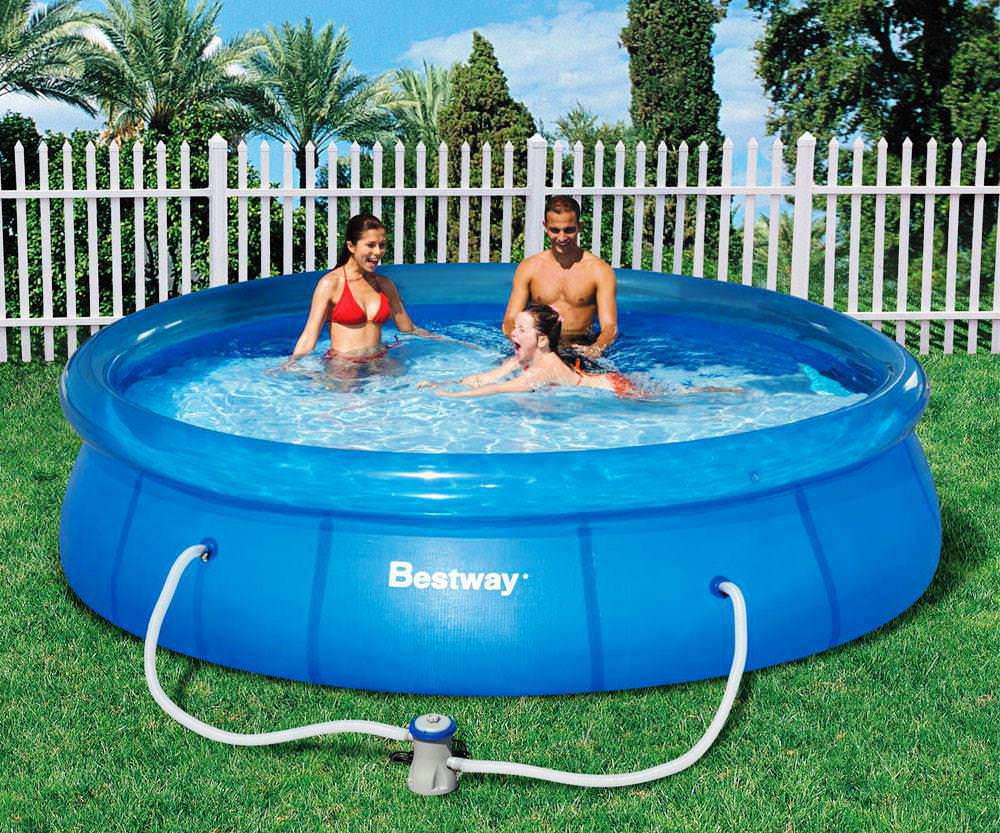
Pool Pumps: Above-Ground Pool Pump vs. In-Ground
As you likely already know, pools can be above-ground or in-ground. A lot of above-ground pools typically end up on those “fail” compilations where unsuspecting owners end up with more of a giant waterfall than a contained body of water. Nonetheless, it’s pretty obvious which type of pool you own, but can you just as easily tell if the pool has an in-ground or an above-ground pool pump?
To help you out, we’ve compared in-ground pumps to above-ground pumps. The biggest difference between these types is size, because in-ground pool pumps must move more water and thus are more expensive. To understand this comparison, think about the Hoover Dam. Now, water is not necessarily moving in a local circle through the famous dam, but the enormous amount of water flow requires ginormous equipment. Tiny pools in your backyard don’t require such massive-scale accessories.
In-ground pool pumps are also located above water level. Above-ground pumps are located below the water level. This might seem a bit like an oxymoron but consider that in-ground pool pumps must self-priming to bring the water up to the filtration system, while above-ground pool pumps make use of gravity to create flow.
Because above-ground and in-ground pool pumps vary in size, they also vary in flow rate. Above-ground pumps range anywhere from 30-60 gallons per minute (GPM), which translates to about 1,800-3,600 gallons per hour (GPH). In-ground pumps have much higher flow rates of 75-150 GPM, or 4,500-9,000 GPH.
As you can see, knowing which type of pool pump you’re equipped with is essential to finding the right replacement or upgrade. Pools cannot easily be switched between pump types, as entire systems are typically built as one. Be sure you know which type of pump you’re looking for before you even begin searching online.
A Note About Pool Pump Flow Rates
It’s all fine and dandy to have a fast-flowing pool pump, but what consumers need to keep at the forefront of their minds is this: the water can only flow so fast as your pool filter can perform its function properly.
Unrestricted, the water could probably flow very fast, but unless you’re tailoring the speed to your filter, there’s really no reason. Your pump and filtration system are in place to filter the water effectively and efficiently and you should always adhere to manufacturer’s guidelines when choosing a pump and/or filter.
Pool Filter Requirements
Any pool pump should be able to filter through the entire body of pool water within 8 hours. To find out what that means for your pump specifically, there’s an easy calculation. Most pumps will be rated at an efficiency level, that is, how many gallons of water they can filter through each hour. This is measured in gallons per hour (GPH), as we’ve mentioned before. Figure out the volume of water your pool holds and see how many hours it takes for the pump to meet or exceed that amount. Theoretically, if a pool were to hold 20,000 gallons of water and the pool pump was rated to 5,000 GPH, it would only take roughly 4 hours for the entire pool to be filtered.
Related: Best Above Ground Pool
This calculation will help you find the right size pool pump you’re looking for in terms of flow rate but may also require you to choose between different types of filters as well. As we discussed, the pump and filter must work in harmony. Let’s take a closer look at the types of pool filters out there.
The 3 Types of Pool Filters
There are 3 main types of pool filters, each with their own sets of pros and cons. The biggest difference between each type of filter is how thick they are. Filters are measured in microns. This is because the harmful bacteria cannot be seen by the naked eye, so filtration must occur on the same level as the harmful contaminants. For comparison, a single human hair can measure between 30-120 microns. With this in mind, let’s consider the first type of filter: cartridge.
If you’re looking to filter right down to the 10-20 micron range, cartridge filters are going to be at the top of your list. These filters are constructed of filtering material that is folded in layers and is typically found in a cylindrical-type form. Cartridge filters require replacement once a year with typical use.
Sand filters require a bit more attention and are not as good at catching anything under 20 microns. Basically, the water filters through the sand, which catches the contaminants and allows the clean water to run freely out the other side. Sand filters require what is called “backwashing” every few weeks. This means that instead of directing the water in one end and out the other, the direction is reversed. Beyond backwashing the filters, the sand needs replacing only every 3-4 years, so it’s a nice long-term investment if your pool doesn’t contain a lot of fine contaminants.
DE, or diatomaceous earth, filters are the nitty-gritty if you’re looking to catch even the smallest—that is, 2-5 microns in size—contaminants. Grids coated with DE powder filter the water in the same way sand filters do but require new powder to be added each time the filter is backwashed.
Filter Type Pros and Cons
Choosing the type of filtration system you prefer really depends on your definition of clean. You might prefer to go with the cartridge filter and call it good, while perhaps increasing your chemical supply to the pool. All the same, other pool owners may choose to filter as much as possible.
If you’re unsure about which type of pool filter you’d like to invest in, here is a quick list of the pros and cons of each type, at a glance:
Cartridge Filters:
- Pros: low maintenance, energy efficient, larger filter area
- Cons: yearly replacement, higher maintenance costs versus other types
Sand Filters:
- Pros: long filter life, doesn’t need replacing as often, cheapest filter option
- Cons: regular maintenance, higher pressure required versus other types, takes up a large amount of space compared to other types
DE Filters:
- Pros: reliable, environmentally-friendly and natural, provides the clearest pool water
- Cons: regular maintenance, high replacement costs, DE powder can be expensive
Keep these characteristics in mind as you’re shopping for a pool pump and/or filter. We’ve also got a few more things you’ll want to consider as you peruse through our top 7 list of pool pumps on the market today.
Best Pool Pump Qualities
Knowing if your pump needs to be in-ground or above-ground is only part of determining which brand to buy. Similarly, you might know the best pool pump to purchase for the particular filtration system you have, but there are a few other characteristics you’ll want to consider as well.
The first of those characteristics is the type of motor each pump is powered by. Pump motors can either be single, dual, or variable speed types. Single-speed motors are the most common and are typically denoted by a horsepower rating. Some of the pumps you’ll see below feature a horsepower rating, but that doesn’t necessarily mean they’re only one speed.
Dual speed motors feature a high and low speed variation, with the high speed equal to what a single-speed’s only setting is. Lower speeds are used for efficiency when the pump doesn’t need to be working as hard.
The best types of motor, however, are variable speed. Though they are more expensive, they are quieter, longer lasting, and digitally controlled to increase efficiency and decrease power bill charges. The permanent magnet motor on variable speed pumps allows you to set the flow rate at any speed you want.
It’s also a good idea to look at the voltage requirements for each pump. Units requiring 110-120 volts can be plugged into a standard outlet, but anything that requires 220 volts will, like many clothes dryers, need a special outlet. If you’re already spending money on putting a pool in, you probably don’t want to have to call an electrician out as well to change your outlet to the proper size.
Choosing the best pool pump can be a tricky thing, so that’s why we’ve created this extensive guide on how you can choose the right pump the first time. Before we delve into which pumps we recommend as the top 7 of this year, let’s talk about one more component that is sure to ruin your day if you don’t consider it before spending a single penny.
Horizontal and Vertical Discharge Ports
Pool owners looking for an above ground pool pump need to determine if they should purchase a pump that has a vertical or a horizontal discharge port. As you might be able to discern from the names, vertical discharge ports have an outlet that faces upward, while horizontal discharge ports face to the left or the right.
Some pumps feature ports that can adjust to either become vertical or horizontal. You won’t really know what type of port you’ll need unless you’re able to look at your existing pump. While it might seem like a trivial aspect, the location of the port can make a huge difference. After all, the entire system was created with that particular port in mind.
Armed with more knowledge about pool pumps, you should feel confident about finding the right pump for your setup. Without further ado, here are the top 7 pool pumps we’ve found on the market today. Which pump will fit your needs?
The Top 7 Best Pool Pumps of 2018
Here they are, in all their glory.
1. Hayward Super Pump 1HP Pool Pump 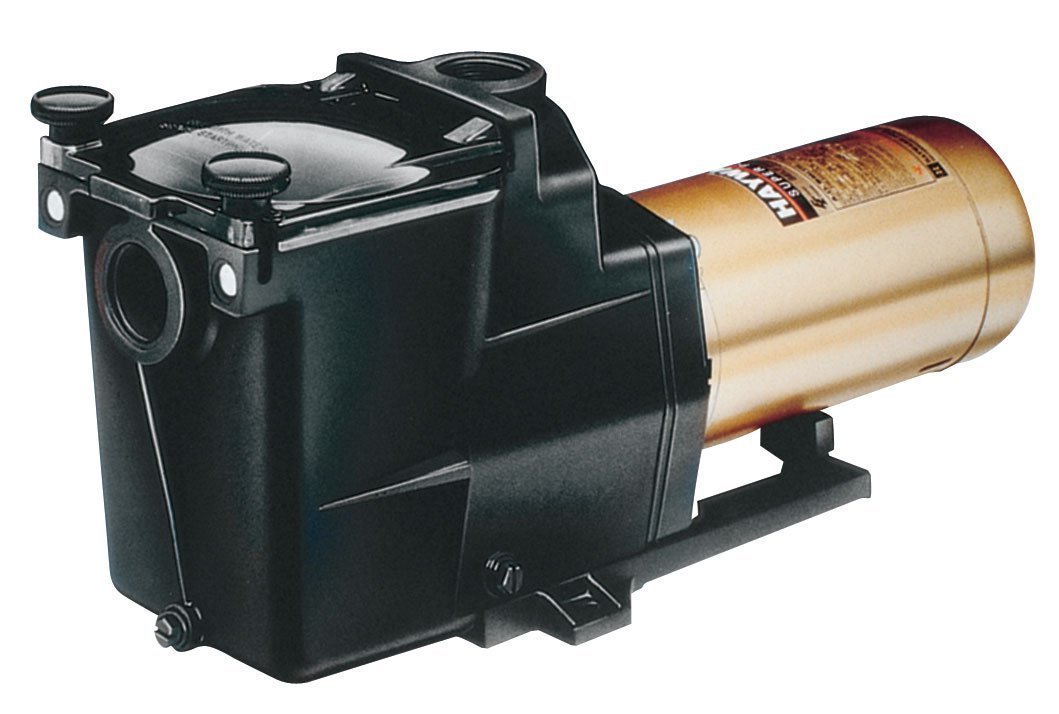
This best pool pump from Hayward is the most expensive on our list, costing consumers around $332. Now, it’s true that it pays to opt for quality when you’re investing in your pool, but some customers might still dislike the high price of this pump, especially considering it is only a single-speed unit.
However, there are a lot of features that redeem this pool pump, including the legacy that stands behind this product. Hayward has been in the business of pool products for over 80 years and continues to create high-quality pool accessories that last.
This 1-horsepower pool pump might not seem like much, but it is capable of filtering your pool’s water in a small amount of time, relatively. The pump features swing-away hand knobs that allow for easy access to the strainer cover. A see-through lid aids in knowing when the strainer needs cleaned. The strainer basket itself is oversized. This is a great thing to have because a larger debris-catching area means you won’t have to change filters as often, so your maintenance bill should be less overall.
Known for their dependability and performance, Hayward pumps are easy to install and service. This particular pump only requires removal of 4 bolts to access internal components. The corrosion-proof construction, efficiency, and quiet nature of this pump make it a favorite among pool owners. The Hayward Super Pump is also self-priming.
For those who are looking to spend more to get more, Hayward is the way to go. However, if your budget doesn’t allow for such high maintenance costs, we’ve still got 5 more pool pumps to check out. Maybe one of these pumps will better fit your needs and budget.
[su_button url=”https://amzn.to/2SPLk62″ target=”self” style=”flat” background=”#fb8746″ color=”#ffffff” size=”10″ wide=”no” center=”no” radius=”8″ icon=”icon:shopping-cart” rel=”nofollow” class=”bestvacbutton”]Buy Hayward Super Pump 1HP Pool Pump[/su_button]
2. Intex Krystal Clear Cartridge Filter Pump, 2500 GPH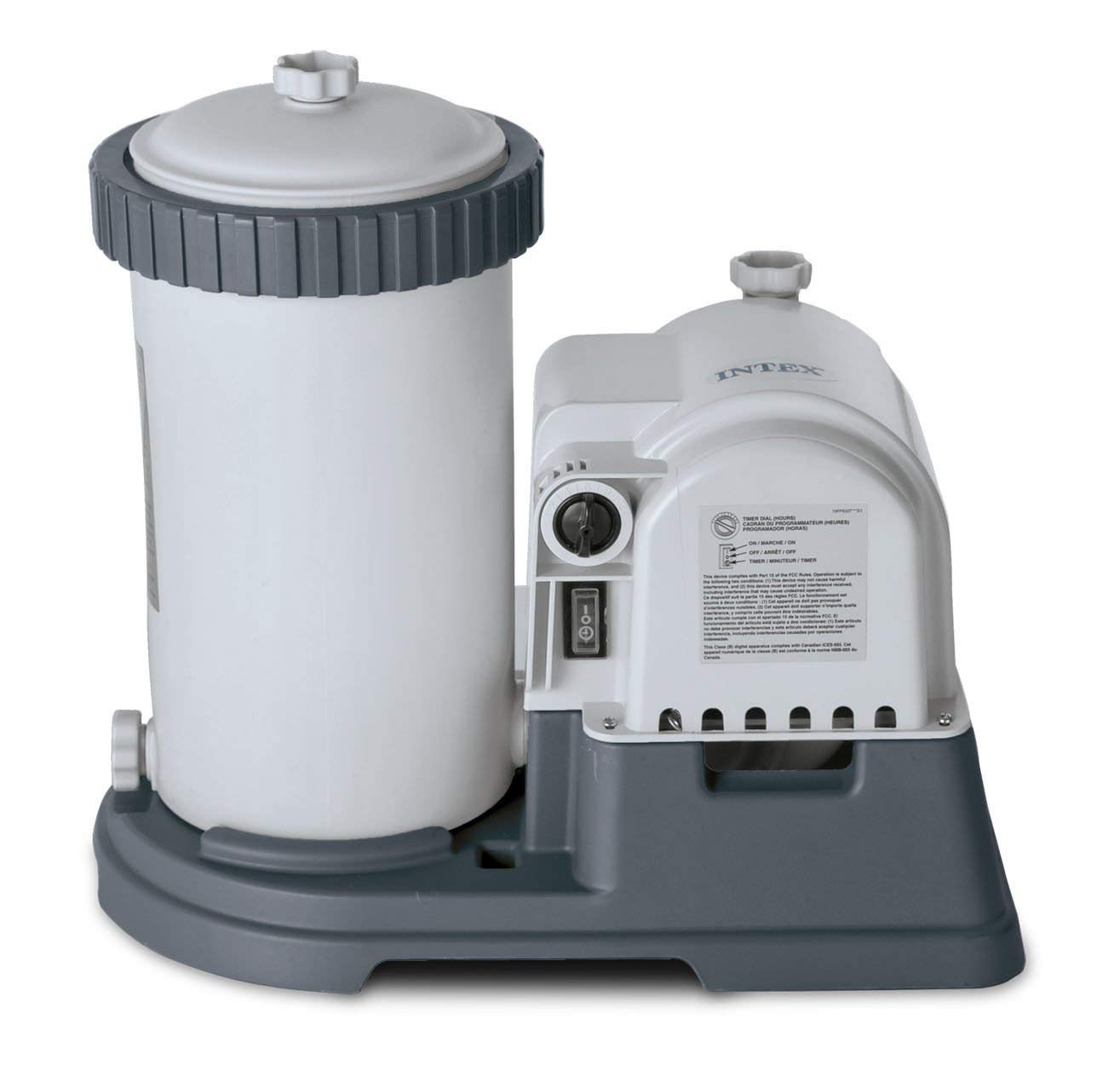
Starting off our list is an $88 above-ground pool pump by the experts at Intex. This pump runs on 110-120 volts and includes a GFCI plug. The pump itself is double insulated and features an air release valve and a sediment flush valve. When you purchase this pump, you’ll also receive 1 free filter.
The Intext Krystal Clear Cartridge Filter Pump is best used on pools that are up to 24 feet in diameter, holding anywhere from 4,000 to 15,200 gallons of water. Though partial assembly is required, this pump is easily installed; all owners need to do is attach the hoses to their proper ports and plug the unit in. Intex recommends changing the filter every couple of weeks and/or as needed. This pump also features a 24-hour timer.
There are a lot more expensive pumps on our list, as you’ll soon see, but there are cheaper ones as well. Intex’s pumps sit in the middle of the pack in terms of cost; so, if you’re looking to save some money and you don’t need a 2,500 GPH pump, keep reading. We’ve got more—including more pumps from Intex—in store, so don’t make your purchase just yet.
[su_button url=”https://amzn.to/2XDKuwO” target=”self” style=”flat” background=”#fb8746″ color=”#ffffff” size=”10″ wide=”no” center=”no” radius=”8″ icon=”icon:shopping-cart” rel=”nofollow” class=”bestvacbutton”]Buy Intex Krystal Clear Cartridge Filter Pump, 2500 GPH[/su_button]
3. Intex Krystal Clear Cartridge Filter Pump, 1000 GPH 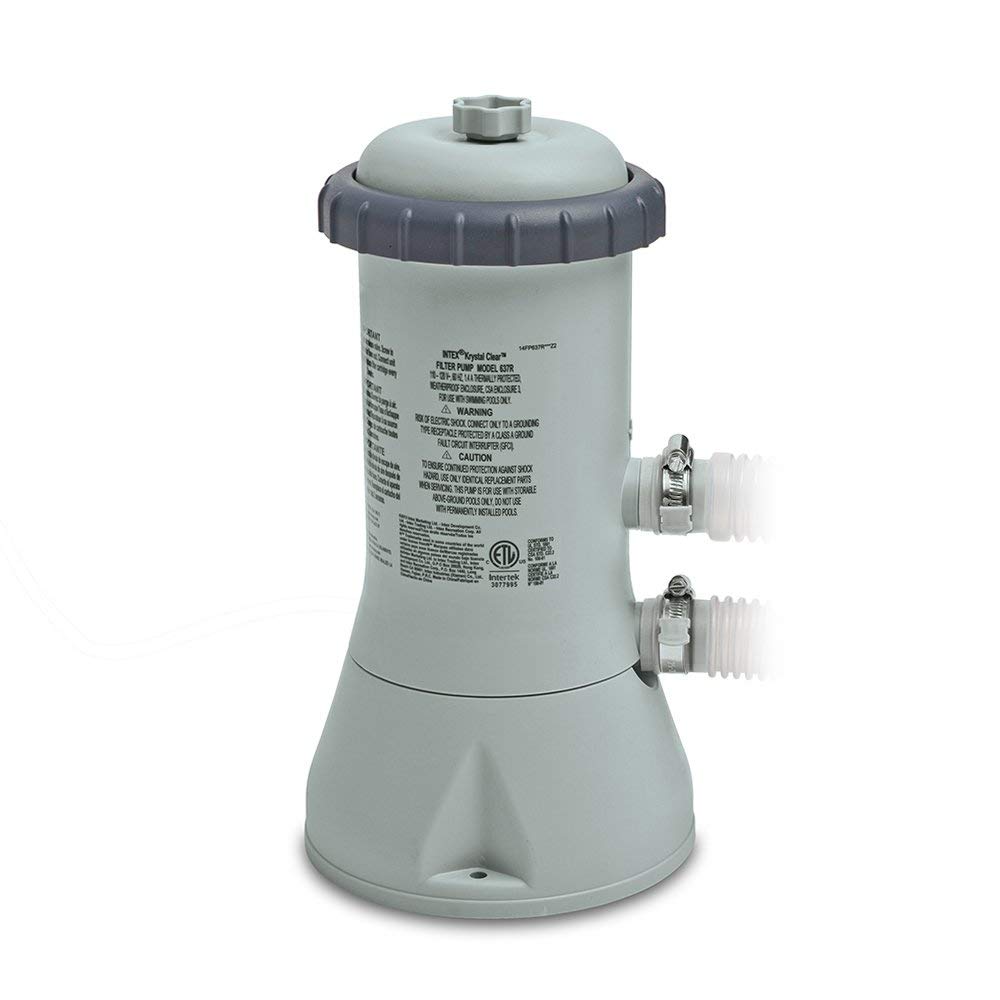
The second Intext pump on our list is one with a flow rate of 1,000 gallons per hour. Though that’s less than half the speed of the first pump on our list, some swimming pools won’t need a pump that strong. This size pump from Intex is a great alternative if your pool is smaller and/or doesn’t require such heavy flow.
Intex’s 1,000 GPH pump costs around $40 and includes one free filter. Easy to install and only partial assembly required makes this pump a no-brainer if you’re looking for a quick and simple solution. Again, these pumps feature an air release valve and a sediment valve as well, to remove air pockets and any sand caught in the filter. This above ground pool pump works for pools up to 6,000 gallons in capacity or up to 15 feet in diameter.
As with the first Intex pump we discussed, this pump also features a 110-120-volt plug with GFCI. For your basic pool pump needs, Intex is a brand you should check out for sure.
It’s always important to make sure you’re choosing the best pool pump for your specific pool needs. If you’re not sure what you’re looking for, be sure to consult whoever installed your pool, or feel free to call pool supply companies and ask their opinions. As long as you keep in mind that they’ll probably try to sell you a pump they stock, you can still ask them what they recommend in terms of rates and specifications.
This is something you’ll want to keep in mind as we continue through our list of the 7 best pool pumps out there today, especially if you live in California. As will be discussed, some of the pumps cannot legally be sold there due to the regulations of Title 20, so make sure you’re getting the right pump for your area as well. It’s always better to spend a bit more to get something that will fit than to skimp on price and find you’ve purchased the wrong pump entirely.
[su_button url=”https://amzn.to/2XJaCGO” target=”self” style=”flat” background=”#fb8746″ color=”#ffffff” size=”10″ wide=”no” center=”no” radius=”8″ icon=”icon:shopping-cart” rel=”nofollow” class=”bestvacbutton”]Buy Intex Krystal Clear Cartridge Filter Pump, 1000 GPH[/su_button]
4. Harris ProForce 1.5HP Above Ground Pool Pump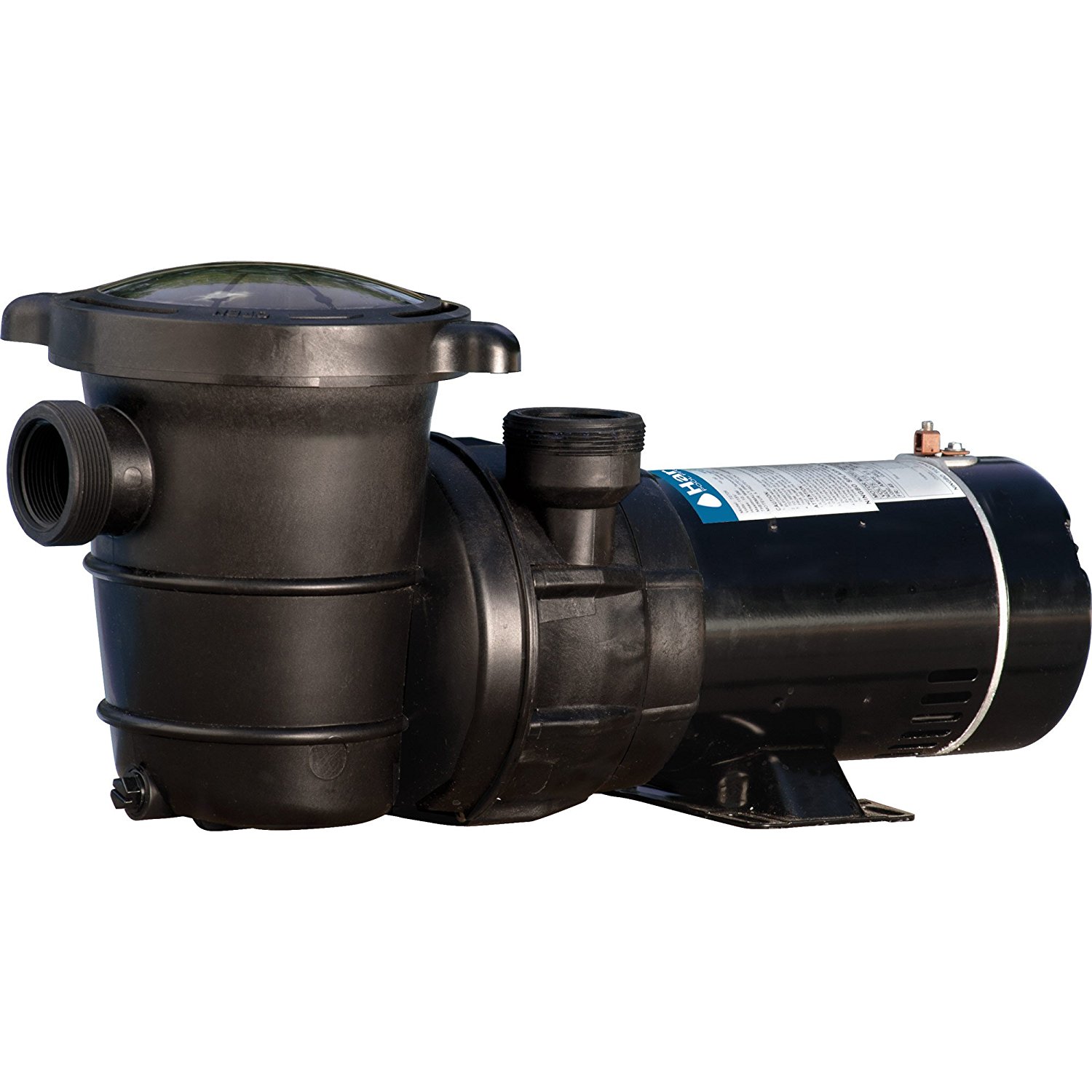
Though this pump is not available in California, but it’s a great buy for people who live elsewhere at around $130. Running on 115 volts, this above ground pool pump features 1.5-inch connections on the suction and discharge ports and has a convenient drain plug. The see-through strainer lid is great for knowing when to clean the pump’s filter, and the 3-prong plug and 3-foot cord ensures safety and flexibility. Harris cautions pool owners not to use this pump on storable pools.
Harris’ stainless steel impeller motor shaft is strong enough to keep this pump running for quite some time and the reinforced thermoplastic body means it can endure even the harshest of Mother Nature’s moods. The high efficiency and minimal noise offered by Harris’ ProForce pool pump is a hard package to beat for the price.
If you live in California, you’ll want to go ahead and skip the next pool pump on our list. But, make sure to check out the last 2 pumps we’ve gathered for you, because they might just meet your needs. If you’re looking in a similar price point to the Harris ProForce pump, however, check out our number 5 pool pump. It offers some features the Harris pump does not.
[su_button url=”https://amzn.to/2NLbgyS” target=”self” style=”flat” background=”#fb8746″ color=”#ffffff” size=”10″ wide=”no” center=”no” radius=”8″ icon=”icon:shopping-cart” rel=”nofollow” class=”bestvacbutton”]Buy Harris ProForce 1.5HP Above Ground Pool Pump[/su_button]
5. Blue Wave Maxi Replacement Pump for Above Ground Pools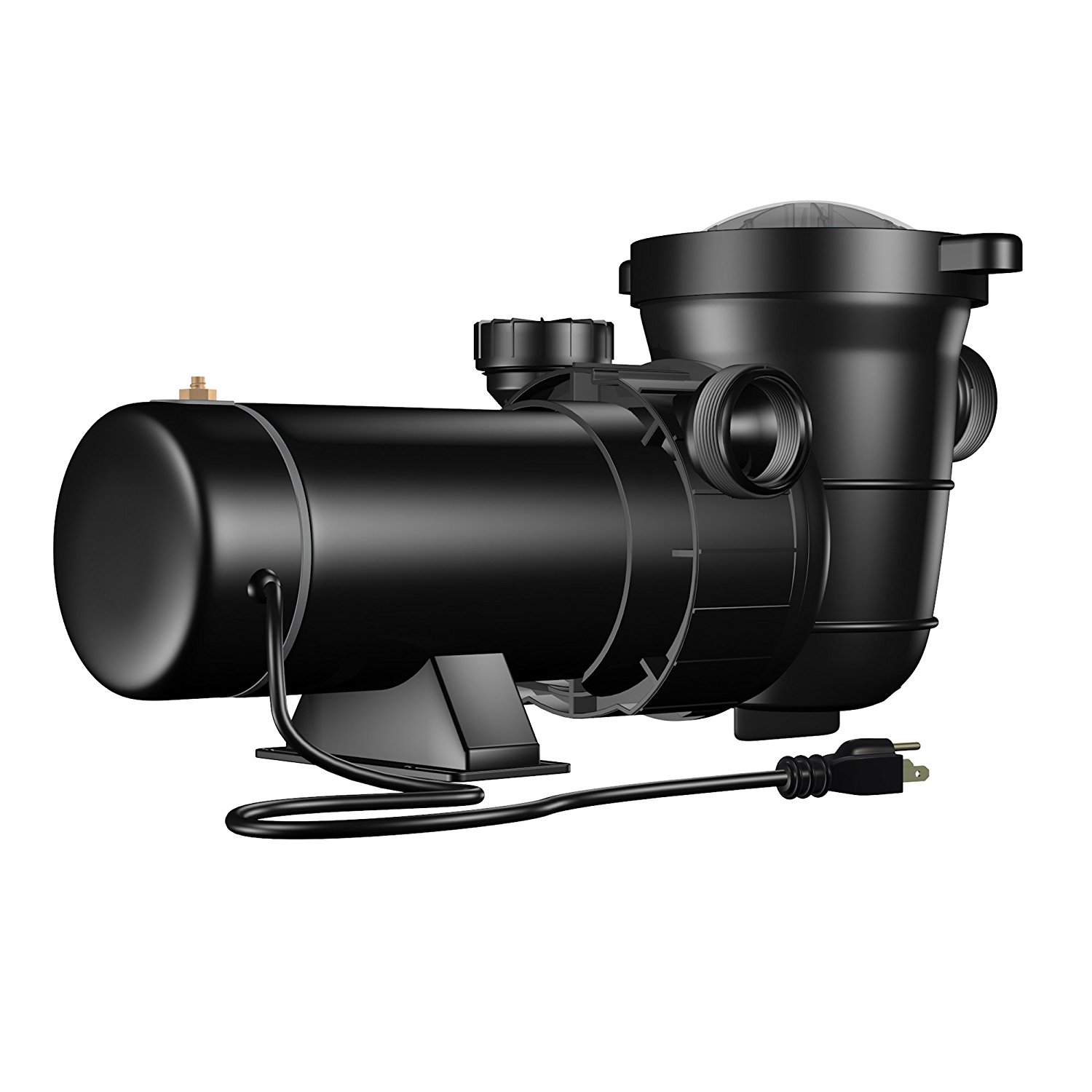
Banned to California residents, the Blue Wave Maxi Replacement pool pump will cost you about $131 and offers 1.5 horsepower. The pump is self-priming and runs on 110 volts via a 6-foot cord. With a clear strainer lid, pump is made of polymer construction and boasts the same quality as Hayward, Pentair, and Sta-Rite. We’ll leave the judging of that statement up to you if you choose to purchase this pump.
What pool owners will really love about the Blue Wave Maxi pump is that it offers a unique dual port design for either vertical or horizontal discharge. We discussed earlier that you’ll want to make sure you know which type of discharge port you’ll need because every pool pump is different. What works in one instance may not fit in another.
The best way to get around this choice is to invest in a flexible pump like this one from Blue Wave. It can be a great spare to have on hand in case you need it and will certainly come in handy in a pinch. Filtration is just as important as circulation when you own a pool, so make sure you’re covered in case of emergency.
[su_button url=”https://amzn.to/2TBzBfN” target=”self” style=”flat” background=”#fb8746″ color=”#ffffff” size=”10″ wide=”no” center=”no” radius=”8″ icon=”icon:shopping-cart” rel=”nofollow” class=”bestvacbutton”]Buy Blue Wave Maxi Replacement Pump for Above Ground Pools[/su_button]
6. Intex Krystal Clear Cartridge Filter Pump, 1500 GPH 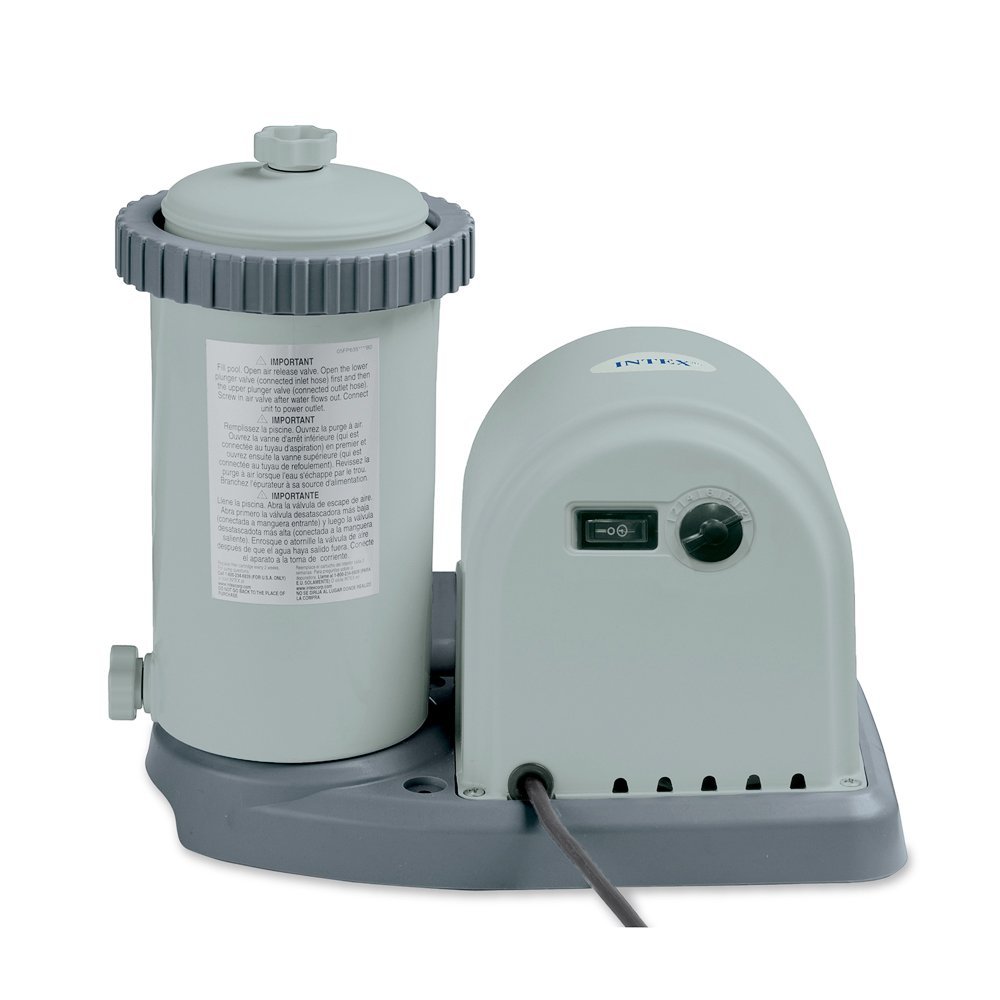
Our final Intex pool pump on the list is this middle-of-the-road pump that will cost customers just over $60. Like many of the other pumps we’ve discussed, it runs on 110-120 volts with a GFCI plug. Plunger valves and inlet/outlet fittings are not included with this pump, but customers will receive a free filter with their purchase.
Intex recommends changing a pool’s filter every 2 weeks or so for maximum cleanliness. Intex pumps of this variety come programmed in 2-12-hour cycles, so you can run your pump as much or as little as necessary. This above ground pool pump is best for pools up to 9,400 gallons, of up to 18 feet in diameter.
The easy installation and minor assembly for Intex pumps is part of what makes them so popular. Double insulation means the pump stays protected against drastic temperature changes, thereby prolonging the life of the pump itself. If you’re looking for a bit more than 1,000 GPH but don’t want the enormous power of the 2,500-GPH pump, this 1,500 GPH unit is a great middle-ground option for pool owners.
Have you found your perfect pool pump yet? We’ve still got one more for the books, so keep reading just a bit further. After all, you want to make sure you know all the options out there before you invest in something, because the pump you don’t see could be the exact one you need.
[su_button url=”https://amzn.to/2NJnTdy” target=”self” style=”flat” background=”#fb8746″ color=”#ffffff” size=”10″ wide=”no” center=”no” radius=”8″ icon=”icon:shopping-cart” rel=”nofollow” class=”bestvacbutton”]Buy Intex Krystal Clear Cartridge Filter Pump, 1500 GPH[/su_button]
7. Hayward Power-Flo LX Series Above Ground Pool Pump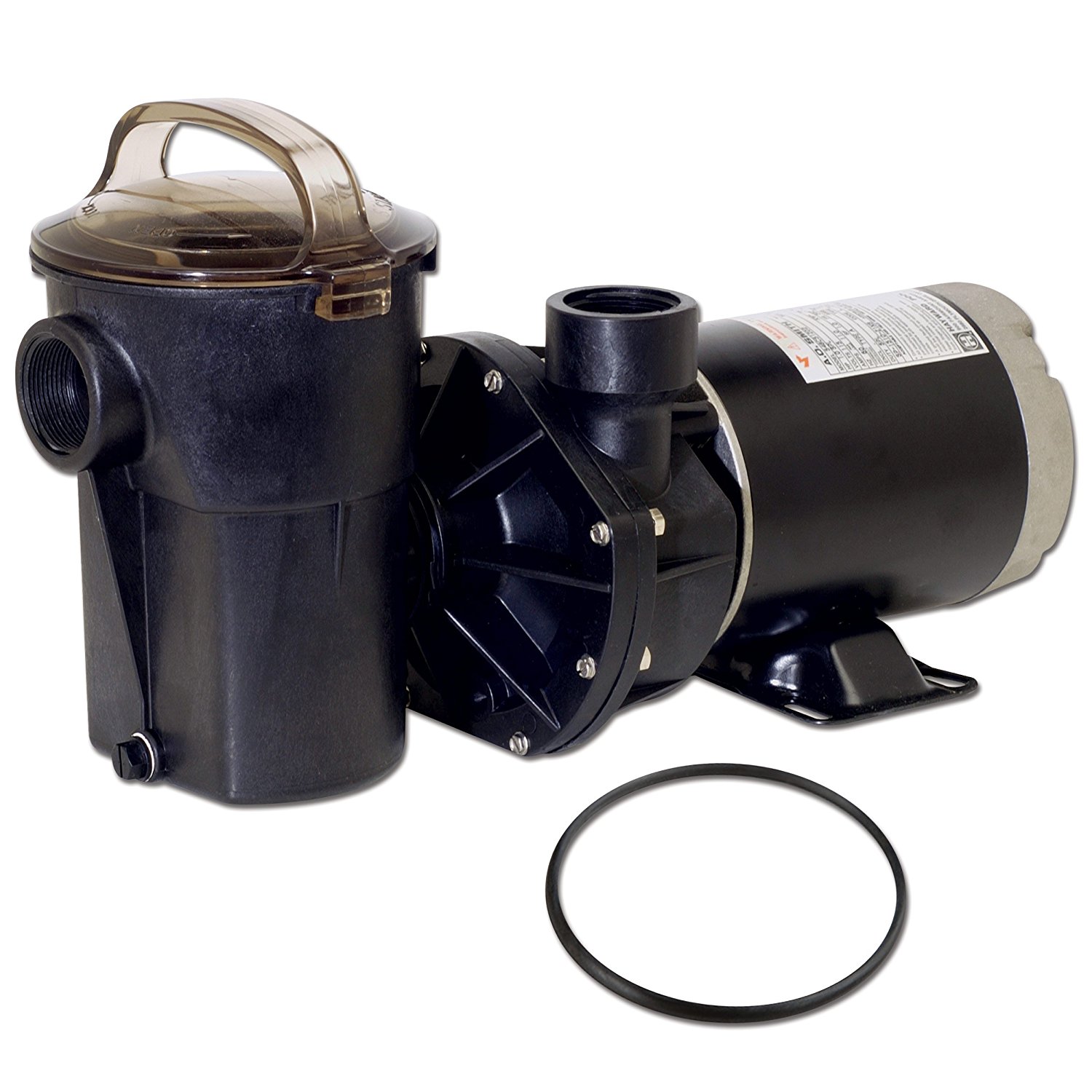
Our second most-expensive pool pump comes from Hayward and will cost customers about $200. This above ground pool pump is 1-1.5 horsepower and comes with the cord and replacement lid O-ring.
A clear strainer cover, convenient drain plug, and 6-foot, 120-volt cord make this pump a contender. Made of durable, corrosion-proof construction, this pool pump is quiet and high-performance. The heat-resistant impeller is great to have in any climate where the summer temperatures near the 90s and 100s.
The best feature of this pump, however, is the flexibility it offers owners. Hayward’s Power-Flo pump can be adjusted for horizontal and vertical discharge. As we mentioned with the Blue Wave pump, this is a great feature to have if you’re not sure which type of pump you need but you know you need one in a hurry. Great in a pinch, these types of pool pumps are a lifesaver.
There you have it! We’ve counted down the top 7 pool pumps available for online purchase right now. We hope that you’ve been able to select the proper pump for your setup and come away from this article knowing more about pool pumps in general.
If you’re curious and want to learn more about the rules and regulations that prevent some of these pumps being sold in California, skip down a few lines. It’s all in the name of efficiency and energy-saving procedures, so do your homework before investing in a new pool pump if you live on the West Coast.
[su_button url=”https://amzn.to/2ES6tJ4″ target=”self” style=”flat” background=”#fb8746″ color=”#ffffff” size=”10″ wide=”no” center=”no” radius=”8″ icon=”icon:shopping-cart” rel=”nofollow” class=”bestvacbutton”]Buy Hayward Power-Flo LX Series Above Ground Pool Pump[/su_button]
Pool Pump Rules in California
As you might have noticed from some of the pool pump descriptions, California does not allow certain pumps to be sold within its borders. If you’re not familiar with the laws in California, keep reading. We’ll break it down for you.
California Title 20 was passed to ensure that pool pumps manufactured after January 1, 2006 met new standards of energy efficiency. Given the Californian climate and the simple fact that most households include a pool, it’s reasonable that lawmakers would address this issue in an effort to save pool owners money in the long run. Some might argue that Title 20 costs more up-front, however. All the same, the law requires higher efficiency ratings for any pool pumps that have to be replaced.
While you’ll need to check specifically what type of pool pump requirements to fulfill in your particular situation, the efficiency of a pump as defined by this law is measured in RPMs. New pool pumps must have 2 speeds in order to meet Title 20 standards, which sometimes require pool owners to replace their entire pump and filtration system, rather than just their pump. As you know from our discussion of types of pool pumps, variable speeds do improve efficiency. And while it may be a hassle and a financial blow to your budget this year, the pool pump’s efficiency over the next few years might just make up for it. Pool maintenance and upkeep costs should be integral to any homeowner’s decision. Having a cool place to take a dip in when it’s hot is a great thing to have, but such luxuries do come at a cost.
Owning a pool might bring a lot of new responsibilities with it but enjoying the pleasure of a personal pool is not something you can easily replicate. Take on the challenge and see why pool owners across the nation continue to maintain their little slice of paradise. Because, if you want to cool down in the summer but don’t want to contend with the crowds at a community pool, it might just be worth the added time, effort, and money.
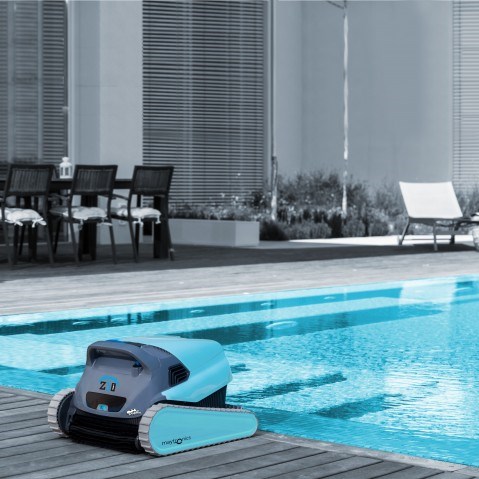
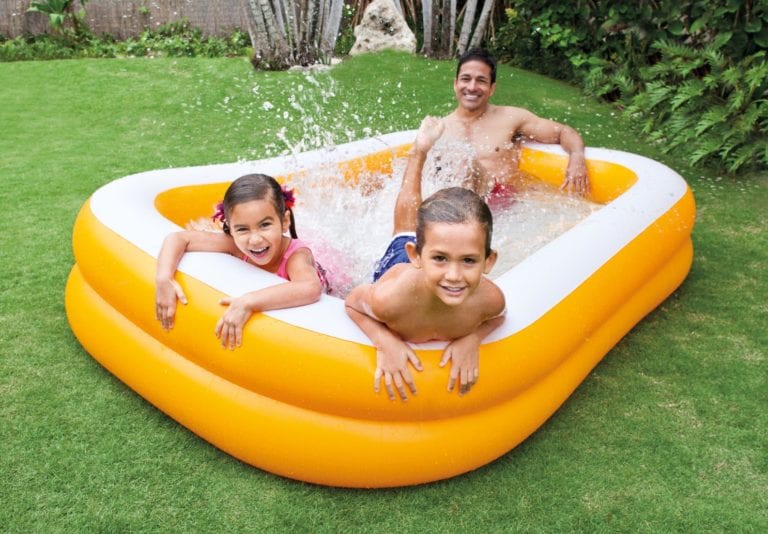
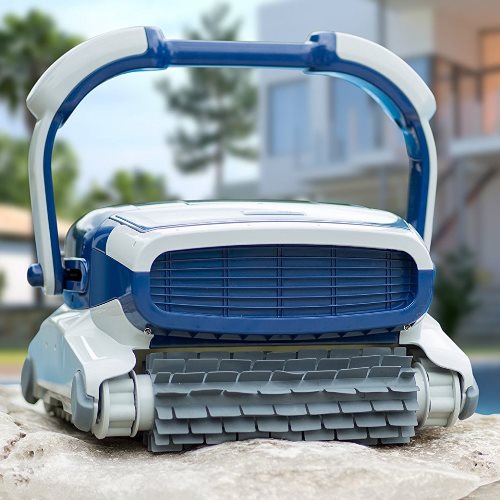
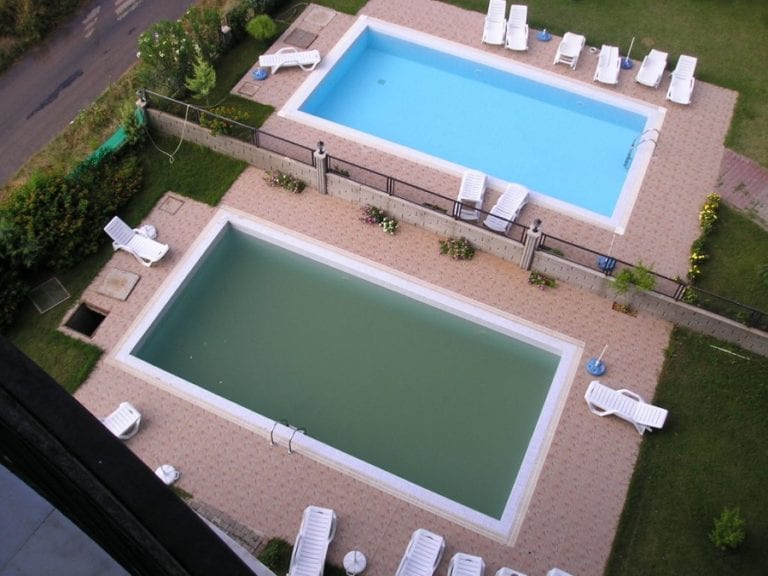
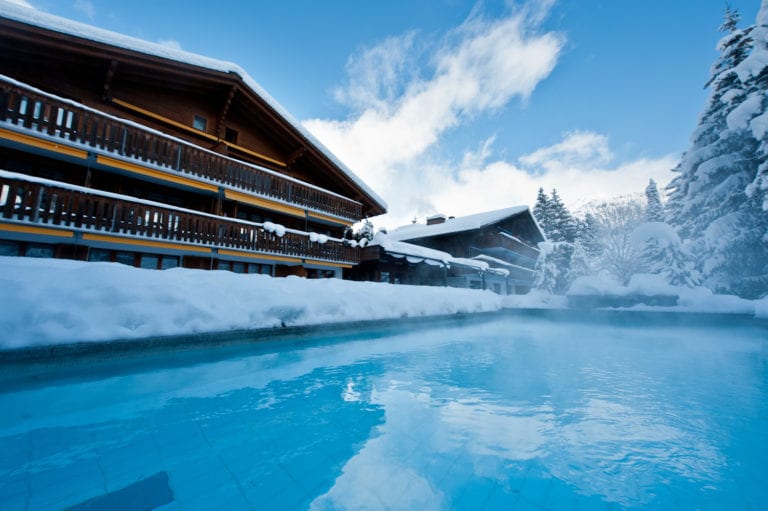
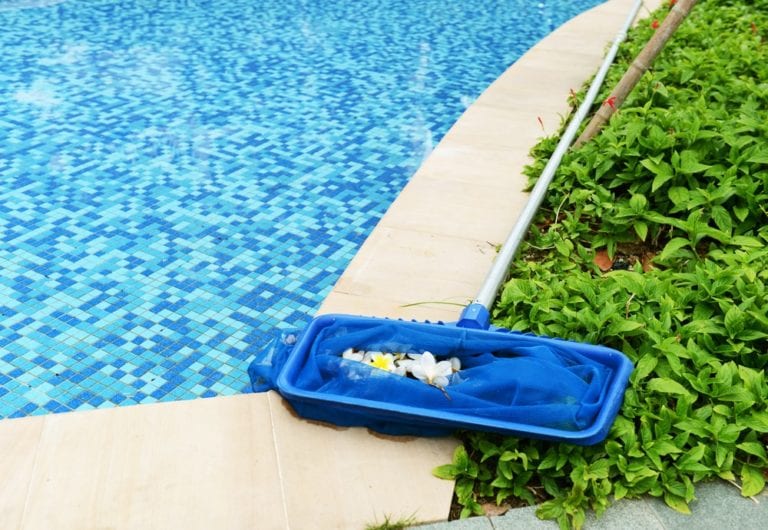
One Comment
Comments are closed.